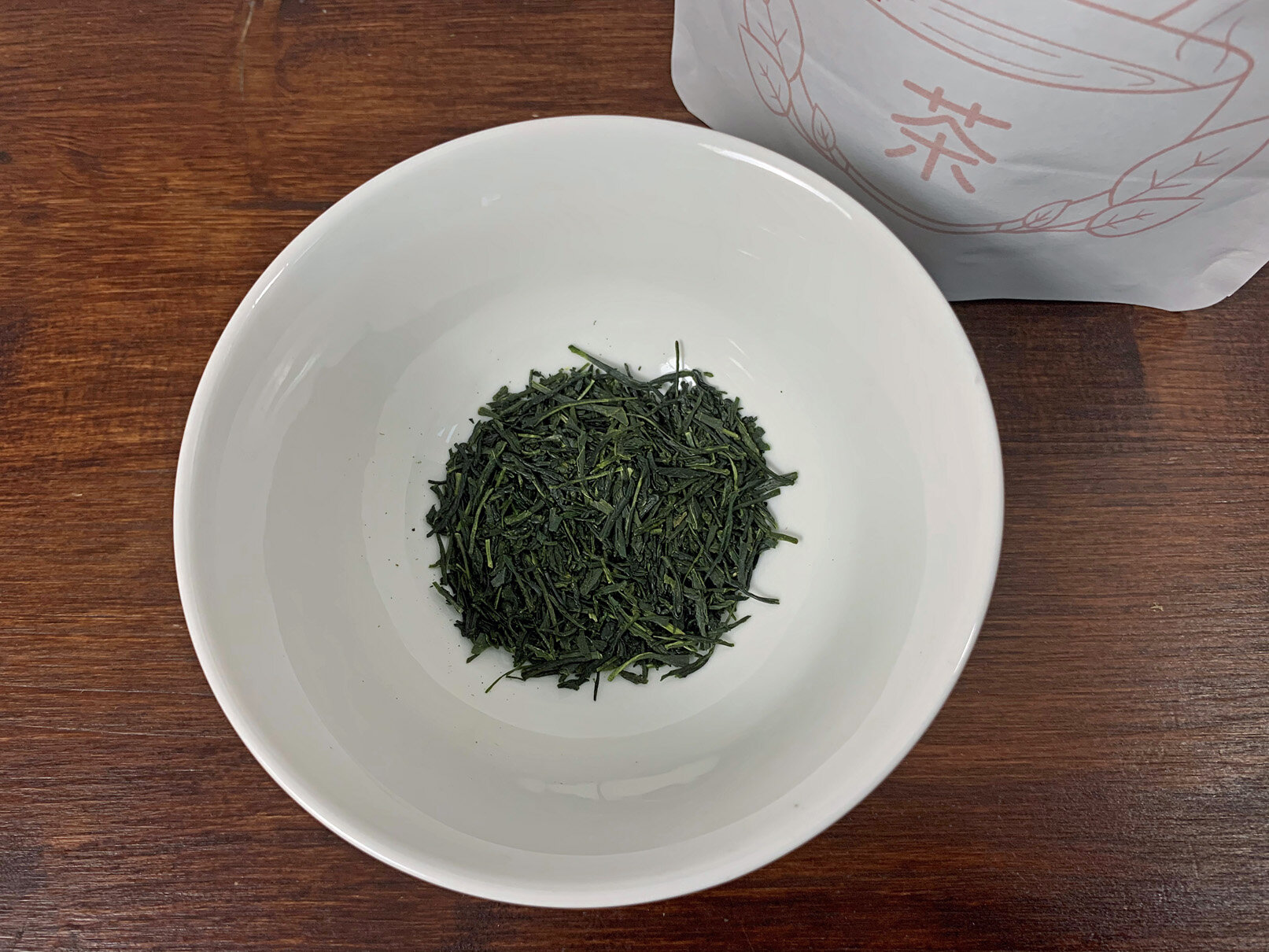Dürfen wir vorstellen: Unser Sencha N°1
In dem ersten Beitrag unserer Blogreihe stellen wir euch unseren Sencha N°1 Grüntee vor und zeigen euch unsere Empfehlung zur Zubereitung dieses intensiven grünen Tees. In dieser Blogreihe geben wir euch eine detaillierte Beschreibung der Tees unseres gesamten Sortiments. Dazu erzählen wir euch alles über Aussehen, Geruch und Geschmack & gehen auf Dosierung, Temperatur und Ziehzeit ein. Auf geht’s.
Hintergrund
Der Sencha N°1 ist ein klassischer Sencha Grüntee, der von einem einzigen Teebauern aus Kobayashi auf der südlichen japanischen Insel Miyazaki stammt. Takayuki-san verwendet keinerlei Pestizide, Herbizide oder chemische Dünger. Der grüne Tee stammt von dem beliebten Cultivar Yabukita, wächst bei vollem Sonnenlicht heran und wird nach der Ernte kurz bedampft (Asamushi).
Erster Eindruck
Der Tee hat ein dunkelgrünes Blatt und eine gleichmäßige Sortierung. Die feinen Nadeln entstehen beim Rollen des Teeblatts und sind typisch für japanischen grünen Tee. Trocken riecht er sehr intensiv nach Früchten, wie Mango oder Maracuja, mit einer ganz leicht frisch-grasigen Note. Der typisch-gemüsige Duft ist bei diesem Sencha nicht stark ausgeprägt.
Dosierung & Zubereitung
Für den Aufguss verwenden wir 2 gehäufte Teelöffel auf eine japanische Kyusu-Teekanne (ca. 350-400ml). Wer es etwas stärker mag, kann auch ruhig 3-4 Teelöffel auf 400ml verwenden. Die Wassertemperatur ist für unseren Geschmack bei 75-80°C optimal. Nach 60sek Ziehzeit hat der Tee bereits das gewünschte Aroma.
Bzgl. der richtigen Temperatur: Wer eine Temperaturanzeige an seinem Wasserkocher hat, hat hier leichtes Spiel. Ansonsten sollte ein halber Liter Wasser aufgekocht nach ca. 10min Abkühlen bei offenem Deckel die richtige Temperatur haben. Alternativ kann man auch das Wasser mehrmals umschütten. Pro Umschütten in ein kaltes Gefäß verliert das Wasser ca. 10°C.
Erster Aufguss
Der erste Aufguss hat eine Sencha-typische grün-gelblich-leuchtende Farbe. Er hat einen milden Geruch. Das fruchtige Aroma kann man gut wahrnehmen. Dazu kommt ein herzhafter, umami-artiger Duft.
Der Geschmack ist angenehm dicht auf der Zunge, wirkt cremig und auch frisch. Der Tee hat Umami - das fruchtige Aroma wird im Nachgeschmack von Schluck zu Schluck jedoch immer stärker, sodass man sehr schnell die Teekanne geleert hat. Es ist ein sehr süffiger grüner Tee mit einem intensiven, vollen Aroma.
Weitere Aufgüsse
Links der zweite und rechts der dritte Aufguss. Auch farblich sieht man eine deutliche Veränderung des Senchas.
Da sich die Teeblätter vom ersten Aufguss geöffnet haben, lassen wir den zweiten und auch dritten Aufguss nur für ca. 15sek ziehen. Die Wassertemperatur belassen wir bei 80°C.
Der zweite Aufguss hat immer noch ein leicht fruchtiges Aroma, welches jedoch leicht deftiger wird. Das Umami kommt nun mehr zum Vorschein. Die Farbe ist jetzt etwas weniger grün. Der dritte Aufguss ist erwartungsgemäß der leichteste im Geschmack. Feine Noten von Umami, Frucht und auch etwas leicht gemüsiges kann man herausschmecken. Farblich ist es jetzt ein leuchtendes Gelb mit einem kleinen grünen Einschlag.
Abschlussbemerkungen
Wenn ihr euren Sencha zubereitet, könnt ihr euch an unsere Empfehlungen halten oder selbst probieren, was euch am besten gefällt. Würde man bspw. mit geringerer Temperatur und kürzerer Ziehzeit beginnen, wären bis zu fünf Aufgüsse möglich. Jeder einzelne Aufguss würde dann auch etwas anders, als wie hier beschrieben, schmecken.
Lust bekommen, es einmal auszuprobieren? Dann schaut doch einfach mal bei uns im Shop beim Sencha N°1 vorbei.
Wie bereitet ihr euren Sencha am liebsten zu? Welche Tipps habt ihr auf Lager? Lasst es uns in den Kommentaren wissen!





